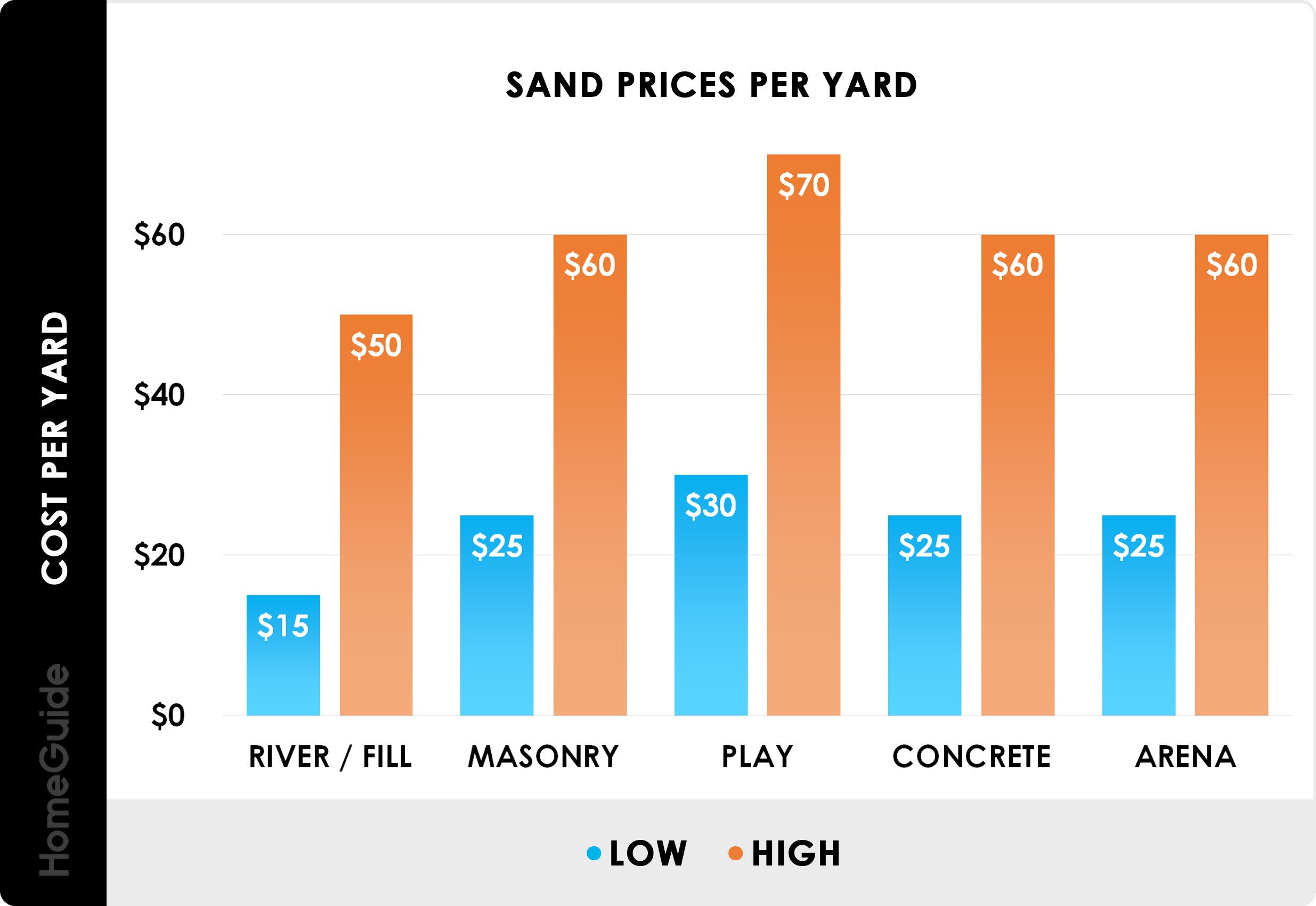Determining the cost of a yard of sand depends on several factors. Whether you’re building a sandbox, creating a beach volleyball court, or mixing concrete, understanding these costs is essential for budgeting your project. This comprehensive guide breaks down the factors influencing the price of sand per yard and provides insights into various sand types and their applications.
A bulk truck load of sand typically costs $15 to $50 per cubic yard delivered. Installation and spreading can add to your expenses. When hauling sand yourself, a 1-cubic-yard scoop may cost $10 to $30.
Factors Influencing the Cost of Sand
Several factors impact the price you’ll pay for a yard of sand:
Type of Sand
Different types of sand have different costs. Here’s a breakdown of common sand types and their typical price ranges:
- River Sand: $15 – $50 per cubic yard. Commonly used for general construction and landscaping.
- Masonry Sand: $25 – $60 per cubic yard. Ideal for mortar and plaster work due to its fine texture.
- Manufactured M-10 Sand: $20 – $55 per cubic yard. Often used in concrete mixes.
- Play Sand: $30 – $70 per cubic yard. Fine-textured and safe for children’s play areas.
- Arena Sand: $25 – $60 per cubic yard. Specifically graded for equestrian arenas and riding surfaces.
- Concrete Sand: $25 – $60 per cubic yard. Used as a key ingredient in concrete production.
- Granite Sand: $40 – $70 per cubic yard. A durable option for pathways and driveways.
- White Silica Sand: $40 – $80 per cubic yard. Often used in sandblasting and specialized applications.
- Golf Course Bunker Sand: $15 – $65 per cubic yard. Designed for optimal drainage and playability in golf bunkers.
- Fill Sand: $15 – $40 per cubic yard. Used for filling and leveling purposes.
- Screened Sand: $15 – $30 per cubic yard. Filtered for consistent particle size.
- Salt Sand: $25 – $50 per cubic yard. Used for de-icing roads and pathways.
- Washed Plaster Sand: $40 – $60 per cubic yard. Clean and graded for plastering applications.
Quantity
Buying in bulk typically lowers the per-yard cost. Suppliers often offer discounts for larger orders.
Delivery Fees
Delivery costs can significantly increase the overall price. These fees depend on:
- Distance: The farther you are from the supplier, the higher the delivery cost.
- Volume: Larger quantities may require larger trucks, increasing delivery expenses.
- Accessibility: Difficult-to-access locations may incur additional charges.
Quality
The purity and grading of the sand can also affect the price. Screened and washed sands, which are free of debris and have consistent particle sizes, usually cost more.
Average Cost of Sand Delivered
The average cost to have sand delivered ranges from $15 to $50 per cubic yard. However, this price can fluctuate based on the factors listed above. Here’s a more detailed breakdown:
Dump Truck Load of Sand
A dump truck load of sand, typically ranging from 8 to 17.5 tons, can cost $300 to $700, including delivery.
Cost of Sand Per Bag
For smaller projects, buying sand in bags is an option. The average cost is $3 to $5 per 50-pound bag. Keep in mind that buying bagged sand is significantly more expensive per cubic yard compared to buying in bulk.
How Much Sand Do You Need?
Calculating the amount of sand needed is crucial to avoid overspending. Follow these steps:
- Measure the Area: Determine the length, width, and desired depth (in inches) of the area you want to cover.
- Convert to Feet: Convert the depth from inches to feet by dividing by 12.
- Calculate Cubic Feet: Multiply the length, width, and depth in feet to get the volume in cubic feet.
- Convert to Cubic Yards: Divide the cubic feet by 27 (since there are 27 cubic feet in a cubic yard) to find the number of cubic yards needed.
Add an extra 5% to 10% to account for settling and spillage.
Types of Sand and Their Uses
Understanding the different types of sand and their uses will help you make the right choice for your project:
River Sand
Also known as utility sand, it is a versatile option used for a variety of construction and landscaping purposes.
Masonry Sand
Its fine, smooth texture makes it ideal for mortar, plaster, and creating a stable base for pavers.
Play Sand
Designed to be safe for children, play sand is washed and screened to remove any potentially harmful particles.
Concrete Sand
Essential for creating strong and durable concrete mixes, providing the necessary structure and stability.
Fill Sand
Used to fill holes, level ground, and provide a stable base for construction projects, serving as an economical option.
Buying Tips for Sand
- Source Reputable Suppliers: Choose suppliers with good reviews and transparent pricing.
- Ask for Samples: Inspect the sand before purchasing to ensure it meets your project requirements.
- Consider Delivery Options: Compare delivery costs from different suppliers to find the best deal.
- Plan Ahead: Order in advance to avoid delays and potential price increases.
- Check for Discounts: Inquire about bulk discounts or seasonal promotions.
Conclusion
The cost of a yard of sand varies widely depending on the type of sand, quantity purchased, delivery fees, and quality. By understanding these factors, you can make an informed decision and budget effectively for your project. Whether you’re creating a playground, building a patio, or mixing concrete, knowing the costs involved will help ensure a successful outcome.
